Time for something crunchy outside and soft and chewy inside! : ) Let’s make gimmari!
Gimmari are crispy seaweed noodle rolls, a snack food that is popular with Korean street vendors and also sold frozen in Korean grocery stores. They’re made of glass noodles rolled in seaweed paper (gim) and then deep fried.
Today I’m showing you how to make homemade gimmari. They are cheap and easy to make, and delicious. The spicy and sticky broth of Korean spicy rice cakes (tteokbokki) make a great dipping sauce for the rolls, and this is how they are usually served on the streets and snack bars of Korea. I suggest that you serve your gimmari with my tteokbokki recipe for the full experience! Pick up a piece of gimmari and dip it in tteokbokki sauce and then pop it in your mouth. The flavor combination is delicious! And then you can eat tteokbokki, too!
I’ll show you 2 ways to fry gimmari in this recipe: the usual way of deep frying in hot oil, and a newer way of air frying in an air fryer. The air fryer is a new tool for me, but I like it so far! Enjoy the recipe!
Ingredients
- 4 ounces sweet potato starch noodles (aka glass noodles, or dangmyeon 당면 in Korean)
- 1 teaspoon kosher salt
- ½ teaspoon ground black pepper
- 1 teaspoon honey or sugar
- ⅓ cup chopped carrot and buchu (Asian chives in English, or garlic chives)
- 4 sheets of gim (Korean seaweed paper)
- vegetable oil (or corn oil) for frying
For dipping sauce
- 1 tablespoon soy sauce
- 1 tablespoon white (or apple cider) vinegar
- ½ teaspoon Korean hot pepper flakes (gochugaru)
- ½ green onion, chopped
- 1 teaspoon sesame seeds
For batter
- 1 large egg
- 2 tablespoons potato starch
- 2 tablespoons all purpose flour
- a pinch of kosher salt
- a pinch of baking soda
- 3 tablespoons water
Directions
Prepare the noodles:
- Bring about 7 cups of water to a boil. Add the glass noodles and stir them with a wooden spoon. Cover and cook for 7 minutes.
- Drain the noodles and rinse them under cold running water, rubbing them with both hands until the noodles are cold enough to handle.
- Squeeze out the excess water and transfer them to a medium-sized bowl.
- Using kitchen scissors, cut the noodles into small pieces.
- Add the salt, chopped carrot, chives, ground black pepper, and honey, then mix them all well by hand. The noodles will get sticky.

Make dipping sauce (optional):
Roll the noodles in gim:
- Fold 4 sheets of gim lengthwise and then cut them along the fold with kitchen scissors, so you have 8 half sheets.
- Take one sheet and put it on the cutting board. Add some of the noodle mixture to the bottom two thirds of the gim.

- Roll up the sheet so you have a long cylinder of gim with the noodles inside. The roll doesn’t have to be perfect or tight, but the noodles should be sticky enough to hold the roll together.
- Repeat with the rest of noodle mixture and the half sheets of gim.

- Place the rolled gim onto your cutting board and cut them once in half, and then the halves into quarters, so each roll makes 4 pieces.
Make batter:
To fry the rolled gim in oil:
- Heat 1 inch oil in a skillet or a pan until it reaches 350°F.
- Dip each roll into the batter with tongs or chopsticks and put them in the hot oil. Repeat with the rest of the rolls, working in batches.

- Fry 1 to 2 minutes until light brown. If the temperature is too high, reduce the heat to medium.
- When finished, transfer each roll to a strainer over a bowl so that excess oil can drip off.
- When all have been fried once, it’s time for the second fry. Heat up the oil until it reaches 350°F again. Then put all of the rolls in the oil and fry for 3 to 4 minutes, stirring occasionally, until they are golden brown.
- Remove from the heat, drain off the excess oil, and serve.
To fry the rolled gim in an air fryer:
- Line your air fryer basket with parchment paper. Dip each roll into the batter with tongs or chopsticks and add them to the basket. Drizzle a few teaspoons of oil over the top.
- Air fry at 390°F (about 200°C) for 5 minutes.
- Turn the pieces over, and then air fry at the same temperature for another 5 minutes.
- Remove from the basket and serve.

Serve
- Serve hot with tteokbokki and/or the dipping dipping sauce.
Maangchi's Amazon picks for this recipe
It's always best to buy Korean items at your local Korean grocery store, but I know that's not always possible so I chose these products on Amazon that are good quality. See more about how these items were chosen.



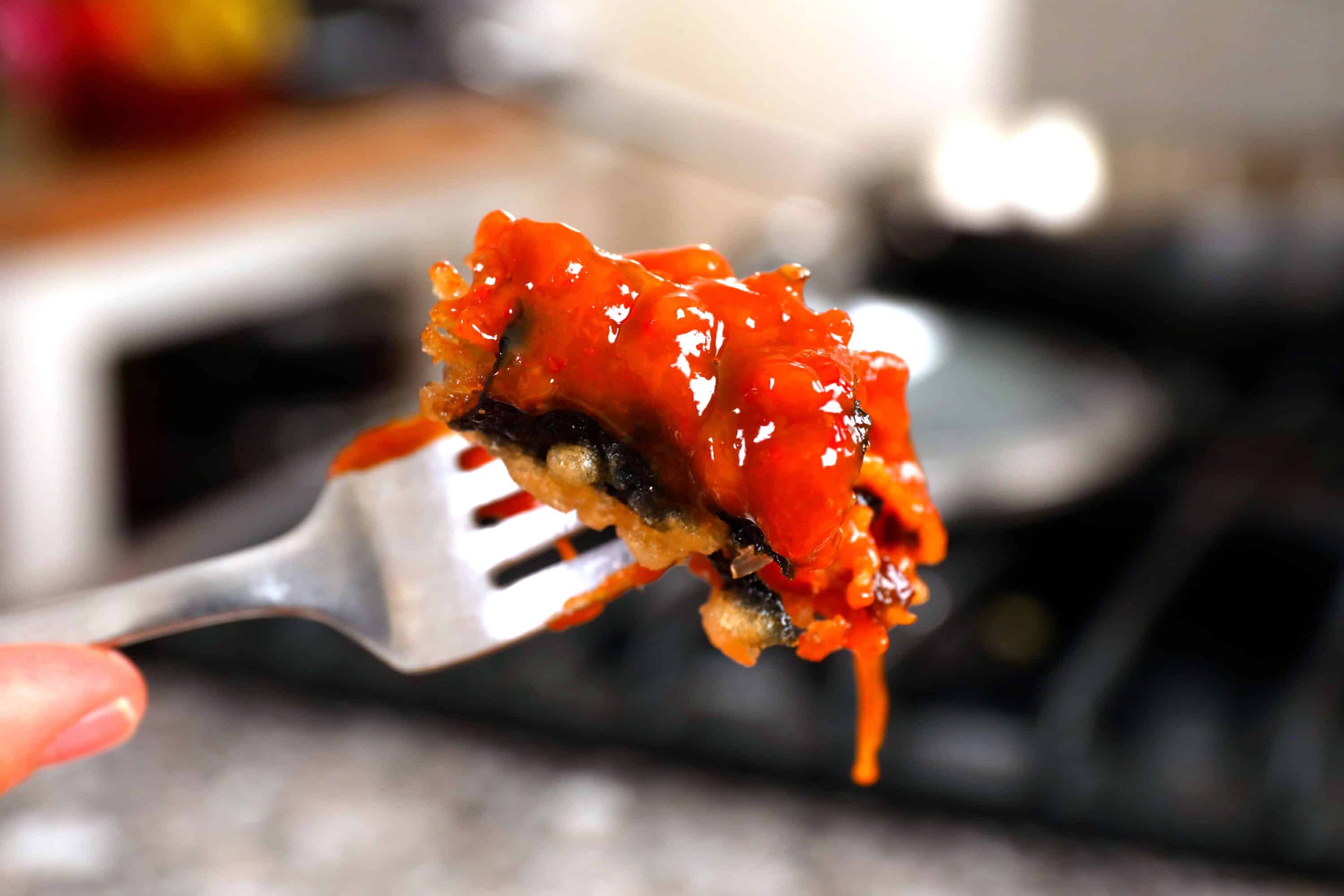
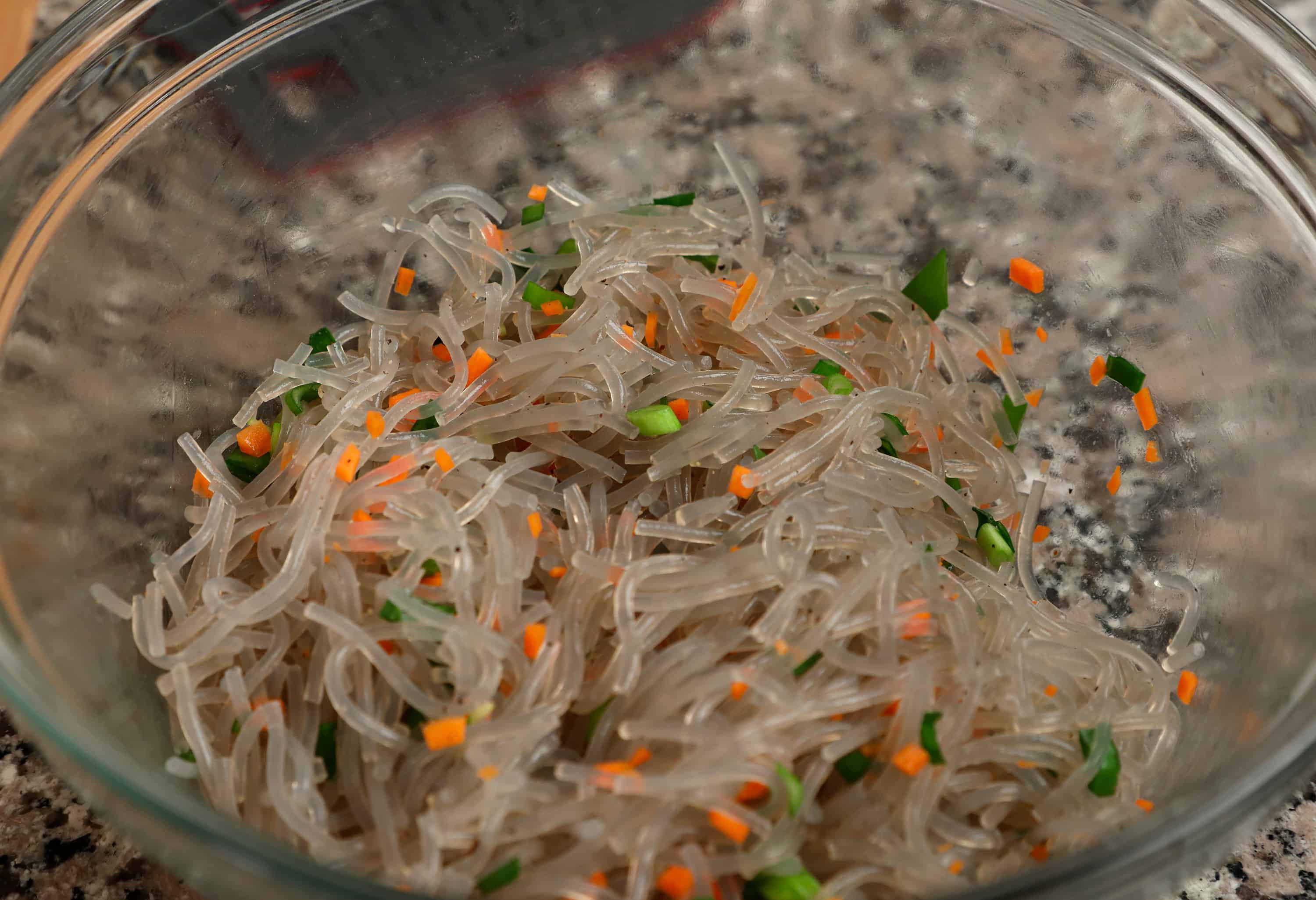

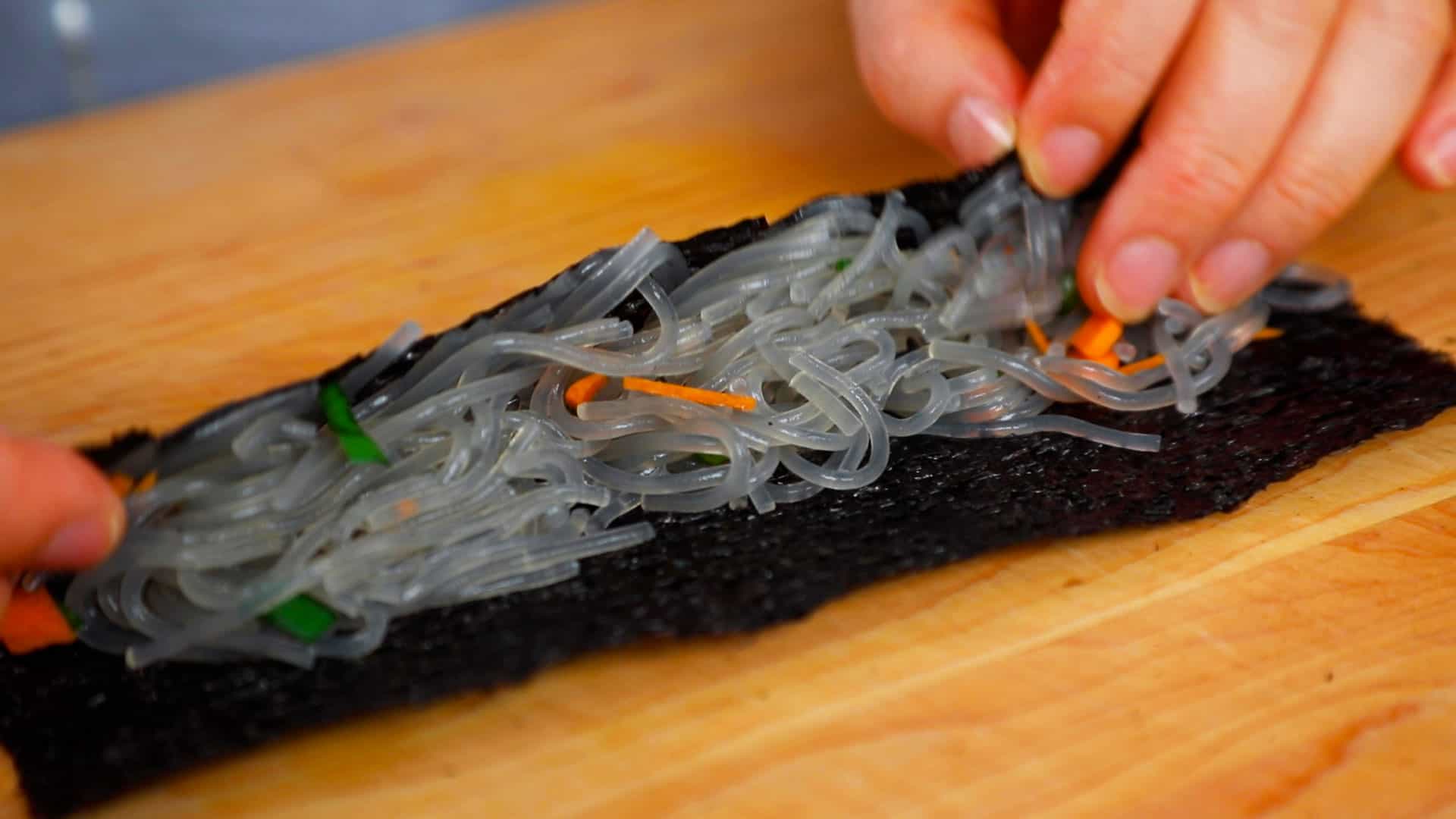
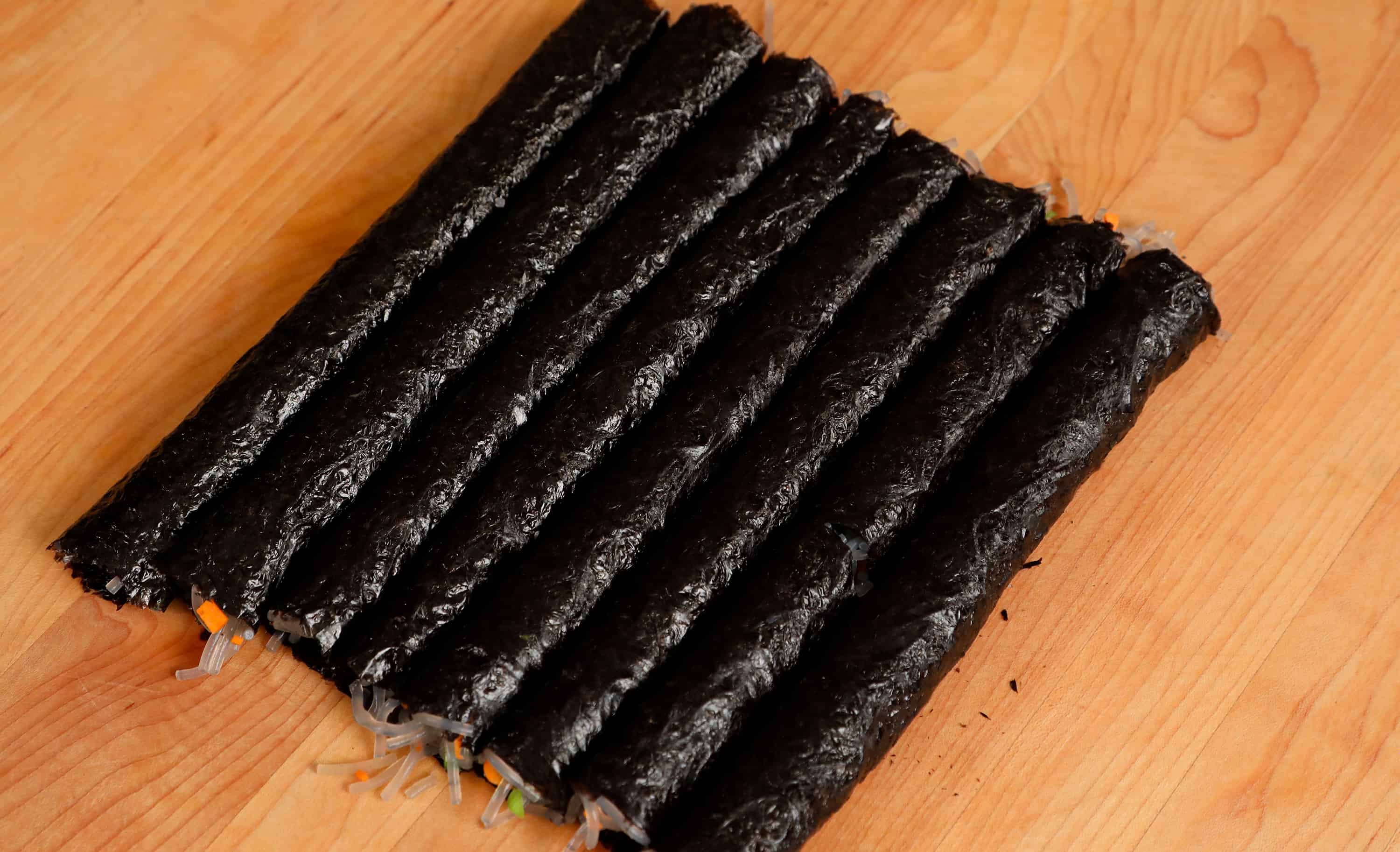
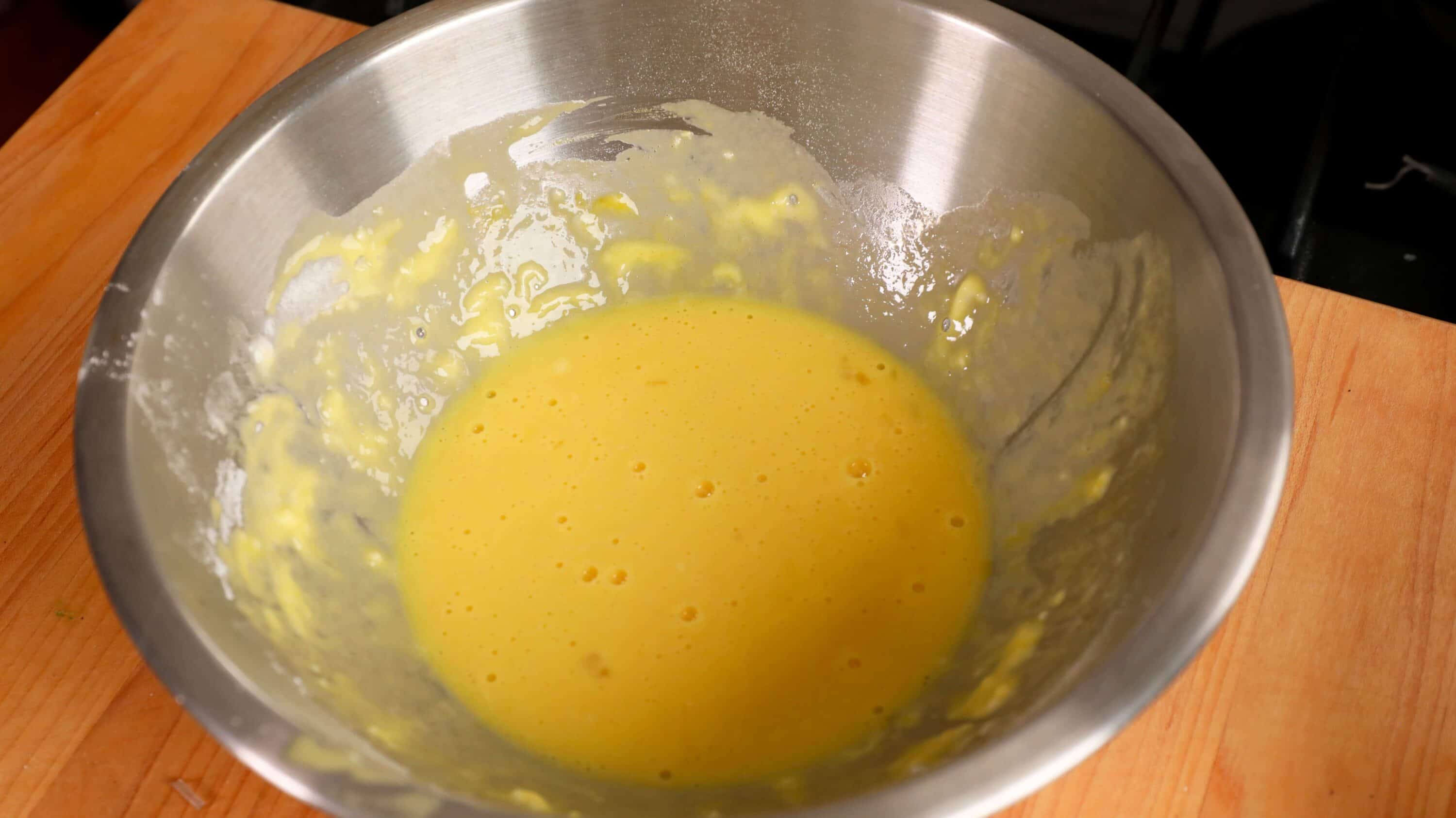

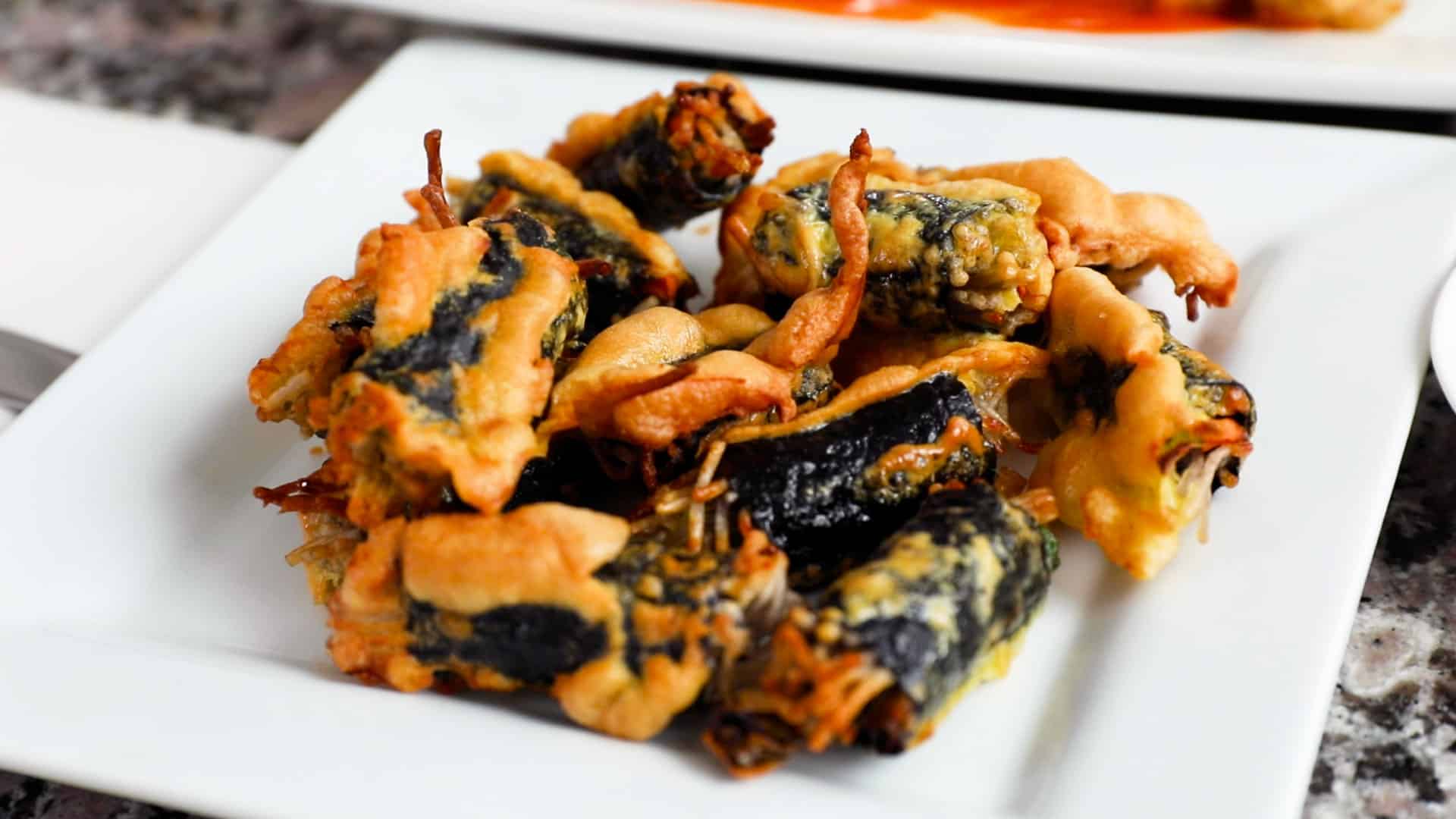

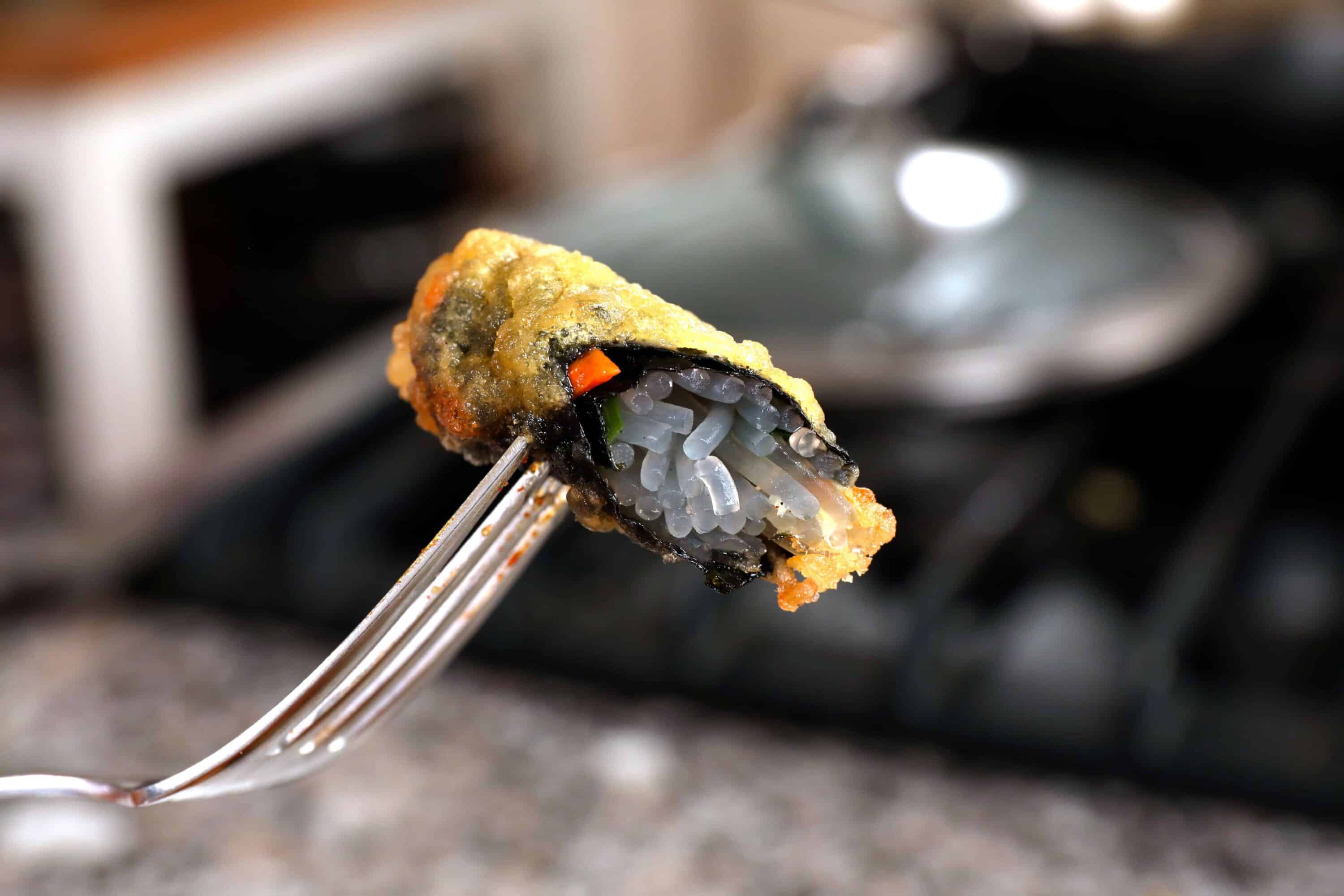











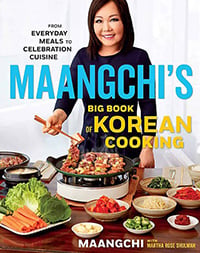






















How do I make these spicy? Do I add gochuguru to the batter? Or add something else to the filling?
made some today with rice paper and it wotked well
See full size image
I should try it out with rice paper, too! The sauce also looks delicious!
I’m unclear as to your method, Simone. Did you wrap the rolls in the rice paper instead of dipping in the batter for frying? That is intriguing.
Is it possible to make extra and freeze it for later or would it go soggy? Do you cook/fry it before freezing? I love korean food but I don’t always have much time to cook, so anything that I can prepare ahead would be great. Thanks
Yes, you need to fry them first and freeze them. Just before serving them, reheat in a microwave oven or fry them one more time.
i tried making this for my mother and i and we loved it! I did two different batches, one with premade tempura batter and maangchi’s batter! So yummy :)
See full size image
Crunchy gimmari with the sauce! Yum! Great photo, too!
Hi, Maangchi!
I was looking for gochu japchae recipe for mandu filling. Is it possible to use this recipe & simply replace the buchu w/ kwari gochu?
Thank you
This is a very late reply but I thought I would still contribute.
I would imagine you can make the filling vegetables anything or combination you choose. The method is the main thing to follow. Well drained glass noodles with finely chopped veg, keeping it from being watery seems to be the crucial guidelines.
Hi Maangchi,
I want to prepare gimmari. But I can only find glass noodles made from rice known as Fine rice vermicelli or bean thread noodles. Can I use this instead of potato starch noodles? Will the taste and texture be different ?
It probably slightly less chewy but it would work.
Hi Maangchi !
That reciped arrived at the right time, I was wondering what to cook, and I had some gim and starch noodles left!
The recipe turned out very well, the gimmari were crunchy even though not really brown.
As often, I do the recipes with what I have at hand, so mine were with some oinons and bellpeper inside, and it tastes good
That was my first comment here, but I’m following your recipes for a while, and they always are great
감사합니다 !